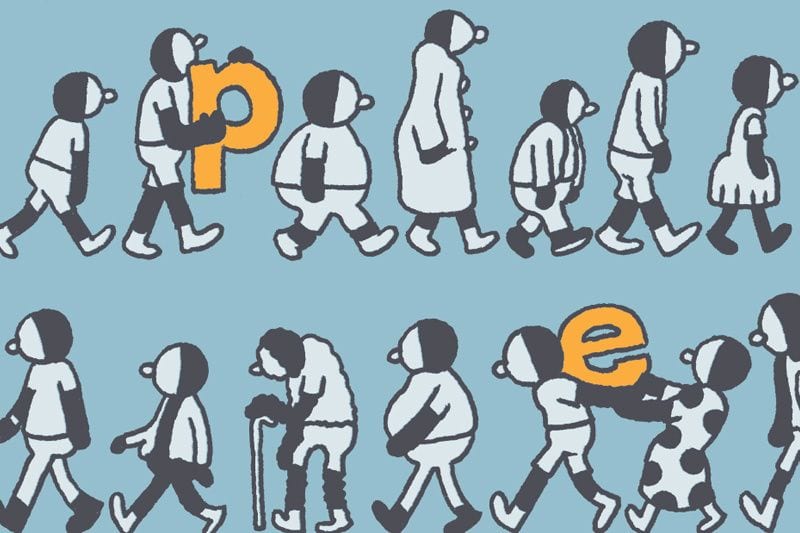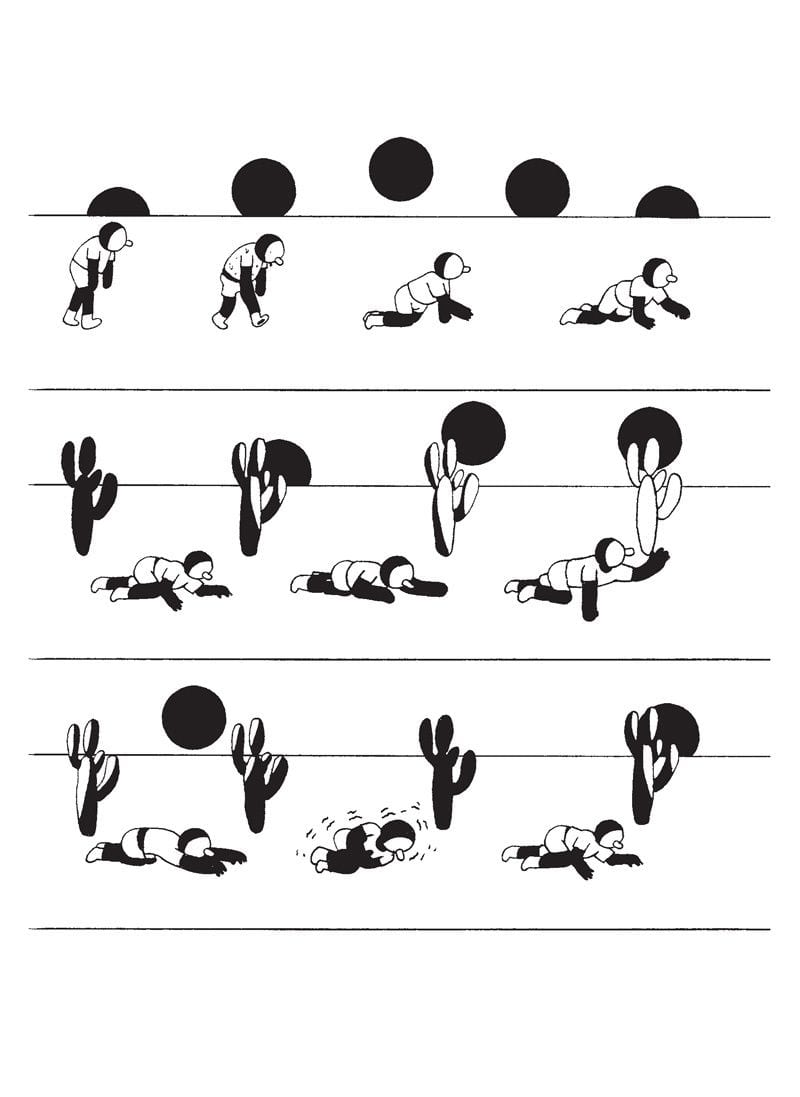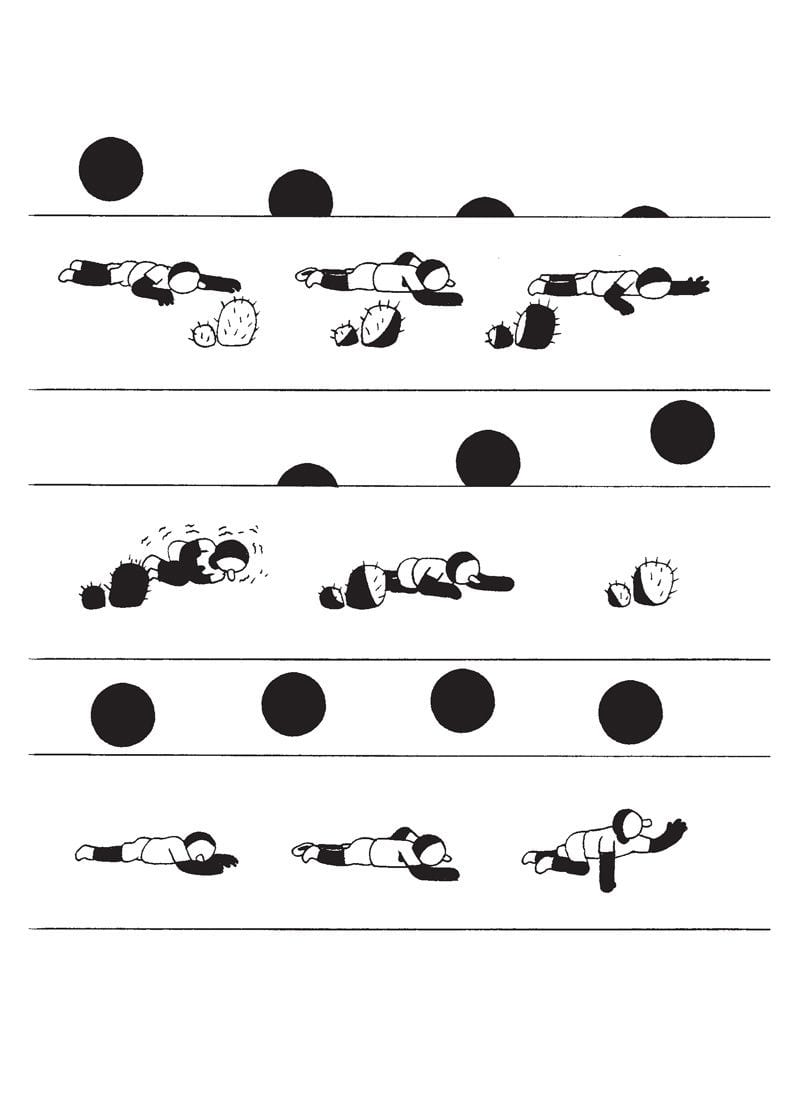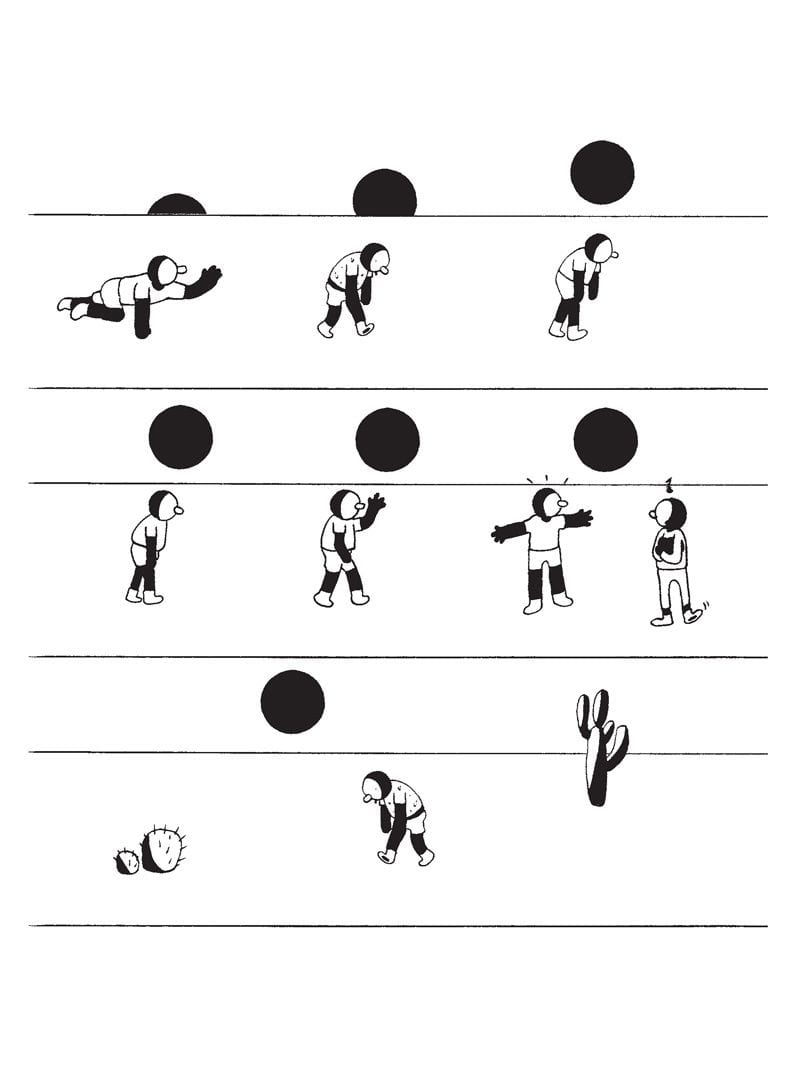
“Penguins go through a lot of hell that could be avoided if they had the ability to fly. The cruel irony lends itself to humor, as well as sadness. Death and the desperate search for love and companionship seem so tethered to life as a penguin, as well as for humans, and so the goal was to bridge those two and make them funny.” – Thorburn’s Artist Statement
A completely wordless set of mostly unconnected comic strips featuring a humanoid version of a penguin, Nick Thorburn’s aptly-titled Penguins is simultaneously crude, clever, and often amusing. This is Thorburn’s first book, though he’s also created album cover art for several bands he’s been in, including The Unicorns and Islands, and he’s been making his comics for years. He also wears his inspiration proudly—he’s most clearly influenced by the work of Robert Crumb, in both content and illustration style.
Thorburn’s penguins are faceless creatures whose actions determine how the reader interprets their feelings. Unable to rely on the facial expressions of his characters, the reader is able to find various meanings in the storytelling of each strip. Where one might see abject sadness and defeat, another might find a macabre, resigned humor; where one may see hopelessness, another silliness. Similarly, some of Thorburn’s subject matters may seem juvenile and vulgar for no real reason, but other readers may still see them as subversive in some way.
While much of the book is focused on the almost all black and white titular penguins, there are also comic sketches of other characters, many in color. The contrast is immediately striking, though the penguin-centric comics tend to have more narrative heft. Regardless of which characters are the focus, Thorburn makes repeated use of figures melting, dissolving, or shifting into the objects around them.
This recurring motif is perfectly encapsulated in a series of drawings in which a penguin is shown on an increasingly shrinking island until he’s treading water holding the last piece of the rock in his hand and an eagle appears, taking it from his hand as he’s almost completely submerged in the water. Whether a general commentary on American greed, or on a personal loss of self, or something else, there’s an often clever depiction here that can be unexpectedly moving.
Thorburn also frequently comments on the state of modern culture. Love is thwarted by a broken laptop, yoga is a surefire path to drug use, and even a UFO crash followed by a car crash make no impact on a small longstanding shack nearby. It’s in these critical observations that Thorburn can alternately veer into the ridiculous and offer some revealing insight. In many ways, that’s at the heart of much of the book. In combining the high and the low, Thorburn manages to achieve moments of sharp understanding and emotional resonance.
Thorburn’s characterizations are also noteworthy in the recurrent archetypes he uses. Most of the penguins appear to be sad, lonely, and meeting failure again and again. In setting them up to almost certainly disappoint or be disappointed, Thorburn creates an atmosphere that recalls the sad sack losers familiar to fans of alternative comics. His sensibility is one that identifies with the outsider, and in doing so, he joins a great tradition of comic artists.
Thorburn also frequently comments on the state of modern culture. Love is thwarted by a broken laptop, yoga is a surefire path to drug use, and even a UFO crash followed by a car crash make no impact on a small longstanding shack nearby. It’s in these critical observations that Thorburn can alternately veer into the ridiculous and offer some revealing insight. In many ways, that’s at the heart of much of the book. In combining the high and the low, Thorburn manages to achieve moments of sharp understanding and emotional resonance.
Thorburn’s characterizations are also noteworthy in the recurrent archetypes he uses. Most of the penguins appear to be sad, lonely, and meeting failure again and again. In setting them up to almost certainly disappoint or be disappointed, Thorburn creates an atmosphere that recalls the sad sack losers familiar to fans of alternative comics. His sensibility is one that identifies with the outsider, and in doing so, he joins a great tradition of comic artists.




